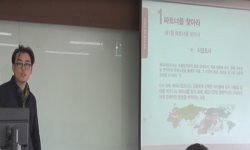This thesis reorganized the time series of trade statistics of Busan Port trade during the Japanese colonial period, and analyzed the trade trend based on this. During the Japanese colonial period, the annual average national trade growth rate was ver...
http://chineseinput.net/에서 pinyin(병음)방식으로 중국어를 변환할 수 있습니다.
변환된 중국어를 복사하여 사용하시면 됩니다.
- 中文 을 입력하시려면 zhongwen을 입력하시고 space를누르시면됩니다.
- 北京 을 입력하시려면 beijing을 입력하시고 space를 누르시면 됩니다.

일제강점기 부산항의 무역 변동 - 시계열 통계의 정비와 기초적 분석 - = Changes of Trade in Busan Port during the Japanese Colonial Period - Making of Time Series Statistics and Basic Analysis -
한글로보기https://www.riss.kr/link?id=A108736888
- 저자
- 발행기관
- 학술지명
- 권호사항
-
발행연도
2023
-
작성언어
Korean
-
주제어
Japanese colonial period ; trade ; Busan port ; export and import ; bias toward Japanese economy ; 일제강점기 ; 무역 ; 부산항 ; 이출과 이입 ; 대일무역편중
-
등재정보
KCI등재
-
자료형태
학술저널
-
수록면
201-238(38쪽)
- DOI식별코드
- 제공처
-
0
상세조회 -
0
다운로드
부가정보
다국어 초록 (Multilingual Abstract)
This thesis reorganized the time series of trade statistics of Busan Port trade during the Japanese colonial period, and analyzed the trade trend based on this. During the Japanese colonial period, the annual average national trade growth rate was very high, around 10%. As a result, Joseon rapidly transformed into an open economy despite being an agricultural society. However, the bias toward Japan in trade was extremely unreasonable, and it was found that the Joseon economy was completely subsumed by the Japanese economy during the Japanese colonial era. In addition, Japan cut off the Joseon economy from other foreign countries thoroughly and subordinated it to serve only the Japanese economy. Busan Port was the one of the key channel of Japanese colonial rule. Thus, the proportion of Busan Port in the total trade of Joseon showed an increasing trend, accounting for around 30%. From 1912, Busan Port overtook Incheon Port to become the nation's largest trading port. As Busan became the largest port in Joseon, the port of Busan was changing from a port more specialized in exporting to Japan to a port in which import from Japan was more important in trade after the annexation. During the Japanese colonial era, the trade balance was chronically in deficit both nationwide and at Busan Port. This deficit was made up by the outflow of gold and silver and the inflow of Japanese capital. In the late 1930s, the export-import balance showed a surplus because goods produced in Joseon and goods imported from Japan increased in export to regions within the en(円) block. Busan Port, which was geographically close to Japan, had a particularly high concentration of trade with Japan. During the Pacific War, the volume of trade with Joseon as a whole decreased based on current prices, but the volume of trade at Busan Port increased. Overall, the trade fluctuations at Busan Port during the Japanese colonial period were more sensitive than nationwide. This uniqueness was due to the geographical proximity to Japan. The largest trading port in Joseon, a much higher share of trade than other ports and high sensitivity to changes in the Japanese economy can be pointed out as major characteristics of Busan Port trade during the Japanese colonial period.
동일학술지(권/호) 다른 논문
-
예술을 통한 도시재생 - 부산 영도 깡깡이예술마을 조성사업을 중심으로 -
- 부산광역시사편찬위원회
- 송교성
- 2023
- KCI등재
-
부산지역 조사 민요의 특징과 의의 - 부산구술문화총서 수록 현장조사 민요를 중심으로 -
- 부산광역시사편찬위원회
- 박경수
- 2023
- KCI등재
-
‘피란수도 부산’의 공간정보 수집과 생활사 연구를 위한 하나의 작은 데이터베이스 - 전국관공서·단체·상공직업별요람부 -
- 부산광역시사편찬위원회
- 한종민
- 2023
- KCI등재
-
부산지역 현장조사 설화의 민속적 함의 - ‘천마산 산신담’ · ‘영도할매 심술담’ · ‘바다 도깨비담’을 중심으로 -
- 부산광역시사편찬위원회
- 황경숙
- 2023
- KCI등재




 KISS
KISS






